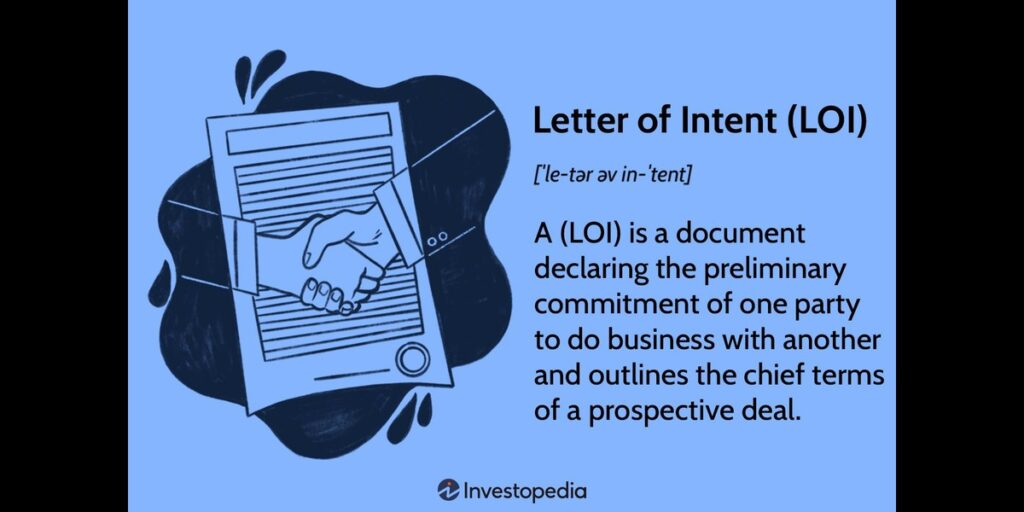Introduction to Letters of Intent
Are you about to dive into a new business deal? Ever heard of the powerful tool called a Letter of Intent? If not, you’re in for a treat! Picture this: it’s like the opening act before the grand performance – setting the stage for successful business transactions. Let’s unravel the significance of Letters of Intent and why they are key players in sealing the deal.
What is a Letter of Intent?
A Letter of Intent (LOI) serves as a precursor to formalizing business deals, outlining the preliminary terms and conditions agreed upon by parties involved. It is not a legally binding document but signifies commitment and intention to move forward with negotiations.
In essence, an LOI acts as a roadmap for the transaction ahead, setting the stage for more detailed agreements to follow. It clarifies key points such as price, timeline, responsibilities, and any specific conditions that need addressing before finalizing the deal.
By clearly defining expectations early on, a well-crafted LOI helps prevent misunderstandings and disputes down the road. It demonstrates seriousness from both sides in pursuing the potential agreement while giving parties time to conduct due diligence before reaching a final contract.
Understanding what a Letter of Intent entails is crucial for anyone engaged in business transactions as it lays the groundwork for successful deals ahead.
Purpose and Benefits of a Letter of Intent
When it comes to navigating business transactions, clarity and intention are key. This is where a Letter of Intent (LOI) steps in as a guiding light. The purpose of an LOI is to outline the preliminary terms and conditions that both parties intend to follow before finalizing a deal. It serves as a roadmap, setting the stage for successful negotiations and ensuring that all parties are on the same page from the start.
One of the significant benefits of using an LOI is that it helps prevent misunderstandings by clearly laying out the intentions of each party involved. By specifying key points such as price, timeline, and other essential terms early on, potential conflicts can be addressed proactively.
Moreover, an LOI demonstrates commitment and seriousness in moving towards a formal agreement. It shows good faith between parties and sets a professional tone for future discussions.
Incorporating an LOI into your business transactions can streamline the negotiation process, mitigate risks, and pave the way for a smoother transition into more detailed contractual agreements.
Key Components of a Letter of Intent
When drafting a Letter of Intent (LOI) for business transactions, it’s crucial to include key components that clearly outline the intentions of both parties.
The LOI should identify the parties involved in the transaction and provide their contact information. This sets the foundation for clear communication throughout the process.
Outlining the proposed terms and conditions is essential. This includes specifying important details such as price, payment terms, delivery schedule, and any other relevant provisions.
Additionally, including a timeline for negotiations and finalization of the agreement can help establish a sense of urgency and accountability.
Moreover, defining confidentiality clauses to protect sensitive information shared during discussions is paramount in safeguarding both parties’ interests.
Incorporating a clause stating that the LOI is non-binding until a formal agreement is reached can prevent misunderstandings or premature commitments.
By encompassing these key components in your Letter of Intent, you set a solid framework for successful business transactions ahead.

Common Mistakes to Avoid when Writing a Letter of Intent
When drafting a Letter of Intent (LOI) for a business transaction, it’s crucial to avoid certain common mistakes that could potentially derail the deal. One frequent error is being too vague or ambiguous in the terms outlined in the LOI. It’s important to be specific and clear about expectations from both parties to avoid misunderstandings down the line.
Another pitfall is including binding language inadvertently. While an LOI is typically non-binding, careless wording can unintentionally create obligations before final agreements are reached. Therefore, it’s essential to clearly state the intent of the document as non-binding.
Additionally, overlooking due diligence processes can lead to unforeseen issues post-letter agreement. Conducting thorough research and including contingencies based on findings is vital for protecting all involved parties’ interests.
Rushing through the writing process without proper review can result in typos or inaccuracies that may impact negotiations negatively. Taking time to meticulously craft and review an LOI ensures its effectiveness in conveying intentions accurately.
When to Use a Letter of Intent in Business Transactions
When considering when to use a Letter of Intent in business transactions, timing is crucial. A Letter of Intent can be employed at various stages of a deal to outline the preliminary terms and establish a framework for negotiations. It’s often utilized when parties are serious about moving forward but haven’t finalized all details.
In complex transactions like mergers or acquisitions, a Letter of Intent serves as a roadmap, setting out key points before diving into the finer points of the agreement. It demonstrates commitment from both sides while allowing room for further discussions.
Using a Letter of Intent can also help prevent misunderstandings by clearly documenting the intentions and expectations of each party involved. This proactive approach can save time and effort down the line by ensuring everyone is on the same page from the start.
Knowing when to deploy a Letter of Intent shows strategic thinking and readiness to engage in meaningful negotiations that lead to successful business outcomes.
Conclusion
A Letter of Intent plays a crucial role in business transactions by outlining the preliminary terms and conditions before finalizing a deal. It serves as a roadmap for both parties involved, setting the foundation for a successful partnership or agreement. By clearly defining intentions, expectations, and key terms upfront, a well-drafted Letter of Intent can help streamline negotiations and mitigate potential misunderstandings.
Understanding how to properly utilize and craft a Letter of Intent can significantly benefit businesses seeking clarity and commitment in their deals. Whether it’s outlining the proposed transaction details or establishing exclusivity agreements, mastering this document is essential for navigating complex business dealings with confidence. So next time you embark on a new venture or negotiation process, remember the importance of leveraging a well-written Letter of Intent to pave the way for fruitful collaborations ahead.

